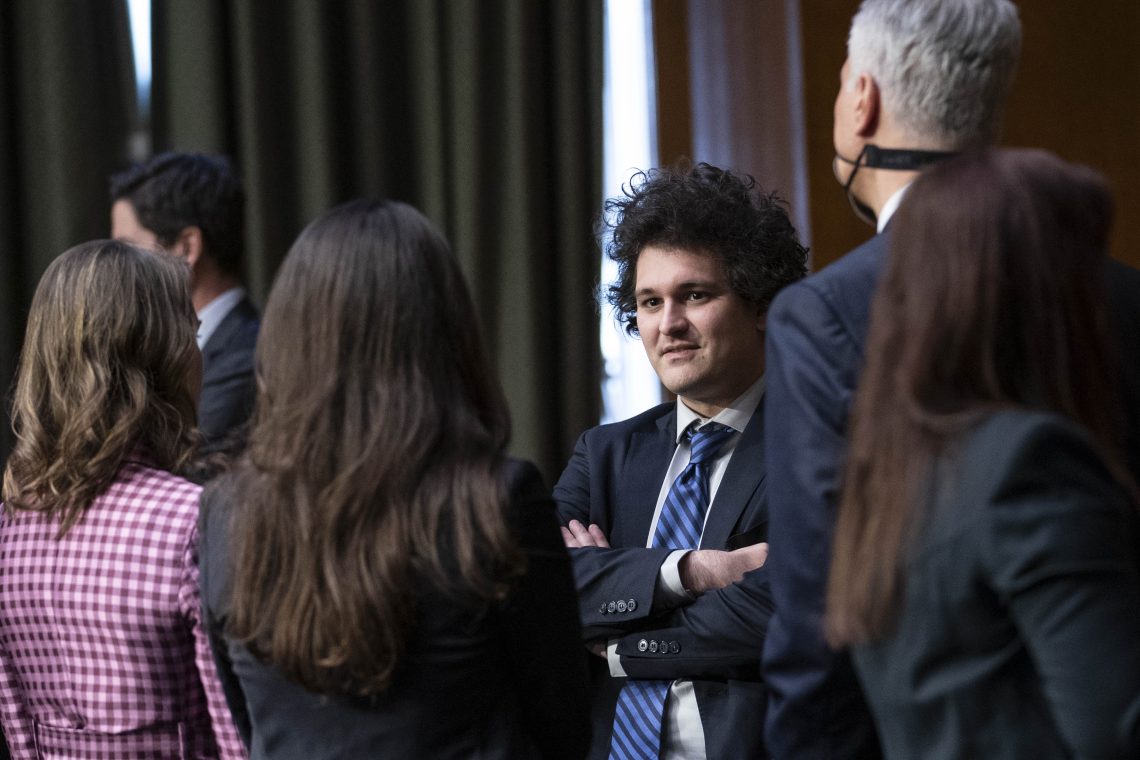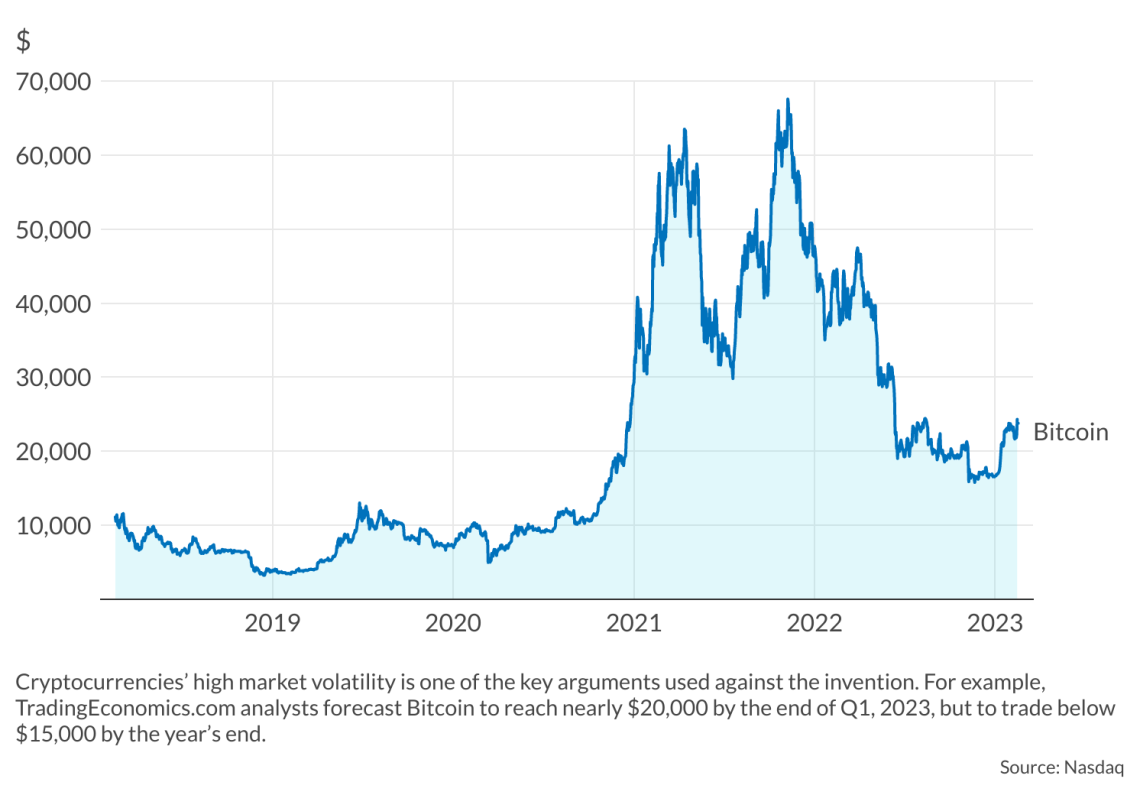Cryptocurrencies: The sages and the charlatans
The sages risk their money on innovative products and build market knowledge. The charlatans exploit cryptos’ unavoidable unknowns. The case of FTX shows it all.

In a nutshell
- All true inventions are at first poorly understood, and investors make errors
- Cryptocurrencies are at the cutting edge of financial innovation
- The FTX collapse is not a verdict on crypto’s usefulness and future
In November 2022, FTX Cryptocurrency Derivatives Exchange, commonly known as FTX, filed for Chapter 11 bankruptcy. Founded in 2019, the company soon became the third-largest cryptocurrency exchange in the world. Also setting FTX apart was that it operated a cryptocurrency hedge fund and actively sought a high public profile – for example, by sponsoring racing car teams and making donations to political candidates in the United States. Usually, exchanges seek a much lower profile. And they differentiate between the facilitation of transactions and investment vehicles.
By mid-2022, reports about FTX started to percolate to the market. They claimed the exchange may have sponsored many financial research reports about itself. Alameda, the main market-maker for FTX, was significantly involved with the exchange and its products – for example, by being the most significant known depositor of stablecoins on FTX. Additionally, reports claimed FTX’s data about its performance, transparency and transactions was unreliable.
Unpleasant discoveries
Other irregularities came to light. For example, FTX appears to have systematically used the Environmental, Social, and Governance (ESG) framework to exploit unsophisticated investors. The company also made false and misleading representations about its deposits being covered by the Federal Deposit Insurance Corporation (FDIC).
What followed is well-known. Investors took their capital and let FTX fall, which rippled through the whole crypto sector. Sam Bankman-Fried, the founder of FTX, is under house arrest. The valuation of crypto assets fell, even if they were not involved with FTX. Predictably, policymakers and other agents in the financial sector started calling for government intervention.
The media portrayed the collapse of FTX as a case study for all alleged problems of the crypto sector. For some, the very idea of generating private money out of an algorithm is a scam. For others, the lack of regulation in the crypto sector is the problem. Without regulation, critics assume, there is no transparency nor investor and consumer protection. And yet, these criticisms are wrong.
Innovation is new by definition
The value of anything comes from its relative scarcity and from how it is transacted between interested individuals, and it does not form some intrinsic mystical quality. Cryptocurrencies can be as valuable as Pokemon Go, a loaf of bread or a handful of rubies, depending on how much people are willing to pay. That also applies to money. Most of today’s currencies are fiat money. They lack intrinsic value, hence the Latin word “fiat,” which means “to believe.”
Read more of technology and the economy
Cryptocurrencies – fears and opportunities
The more important point made in the media after FTX’s collapse has to do with regulation and transparency. Here is the clue: Many of FTX’s products were already regulated. And most of the irregularities leading to the late 2022 collapse were widely and transparently known as early as the company’s founding. For example, Alameda, the research company, was cofounded by Sam Bankman-Fried of FTX. He also pushed for regulations personally by backing the proposed Digital Commodities Consumer Protection Act (DCCPA) in the U.S. Congress.
What went missing in the public discourse was another phenomenon altogether. Cryptocurrencies still are a new brainchild, and their financial sector and products are innovation-driven. Novelties and emergent sectors attract special groups of people: sages who invest, innovate and take on risks and charlatans who only see an opportunity for personal gain.
Learning through doing
In any economic field, innovation is, by definition, little understood. Since it is new, market participants have yet to figure out what it is, how to use it, what results to expect and what risks are associated with it. As these market participants increasingly experiment with the innovation, they are on a learning curve, and its results become more and more public knowledge. Transparency increases the more an innovative product is used in the market.
Facts & figures
Often, it takes a long while until the innovation’s value proposition is sufficiently understood, and it can take even longer for the market to learn how to deal with it. There are bumps along this road. Think, for example, of electricity: it took around 100 years until it was understood as an economic good and at least as long to figure out how to use it as a value driver.
The same applies to financial innovation. As structured products and hedge funds entered the market, only a few “quants” (qualitative analysts) fully understood them. Market participants learned how to use them step-by-step. These products, too, went through phases of spectacular performances, gigantic collapses, consolidation, and repositioning. However, the longer they went through them, the better they were understood. Also, the learning curve was crucial to identify the imposters who tried to take advantage of the innovation’s initial transparency deficit.
Central bank digital currencies and the war on cash
The ECB’s rush toward a digital euro
Markets vs. central banks
It is tricky to exploit innovations like crypto, since their properties are opaque by their nature. The process through which the market participants adopt it is similarly unforeseeable. This haziness makes innovation interesting for investors and risk-takers. But it also attracts rip-off artists who grasped how to ride along. In the margin of innovation, patterns for market behavior are still forming. Therefore, many of the usual markers of crookery and clues to sort out the fraudsters are still missing or do not work well – a fact known to the pretenders.
Choosing to ignore warnings
Nevertheless, even in the innovative environment, tell-tale signals can be spotted, indicating whether a business proposition belongs to the creative margin or merely rides along it as a fake. Interestingly, most of the red flags applied to FTX – and regulators, professionals and occasional investors continued to ignore them.
The flashiest red flag was the institutional bundling of FTX and Alameda Research. It is a well-established practice in financial markets to separate proprietary research from market-making and implementing products. And proprietary research itself needs to be conducted independently. The FTX blatantly violated this rule.
Additionally, an exchange launching its own hedge funds should have set some alarms off. Another well-established practice in financial markets is that infrastructure providers such as exchanges should not sell financial instruments locked into their infrastructure.
Mr. Bankman-Fried himself should have triggered some of the usual warnings. An entrepreneur does innovate, spending his money on people developing products and applications. Spending it on lobbying is suspect at an early stage of company development. Whenever any company owner embarks on the regulatory business, he aims to redistribute benefits to himself and not create them – which is anathema to innovation. The FTX’s founder’s entanglements with politics and a push for regulations should have been enough to call his entrepreneurialism into question.
Blockchain and its potential for economic disruption
Big Government is watching you
These warnings are not particular to the financial sector. They do apply to any investment and economic activity. They relate to governance, the product, and the people behind a business model. Note, too, that all these aspects were transparent before FTX’s collapse and that no regulation could have made them more transparent. In this case, people just wanted to follow Mr. Bankman-Fried.
Scenarios
What scenarios follow for the crypto sector after the fall of FTX? Here are the leading possibilities.
Organic development and market growth
In the most likely scenario, cryptocurrencies will continue to grow as a market and in scope. However, this will be accompanied by a twofold consolidation. First, the infrastructure of the market, the exchanges, will consolidate. Second, the types of crypto used will be pared. These types will form the short head, while the others will end up somewhere in the long tail.
Strong candidates for the short head are cryptos with well-established rules and transparent transactions – like bitcoin – or such that operate on or as a base technology for other applications, such as Ether. In this scenario, increased regulation, higher operating costs, and government co-option (at least of the infrastructure) are likely. On the other hand, the learning curve of the market, increased transparency and the differentiation of products will allow for a mainstreaming of cryptos.
The best-case scenario resembles the most likely, but it establishes itself much quicker and without (much) government intervention. In the most likely case, the market will need another decade to make its learning curve, and in the best case, it can do so in the next five years. As the crypto sector consolidates, the exponential increase in information slows down, allowing for more transparency and the establishment of recognizable patterns in crypto markets and products.
Two drivers provide the velocity in this scenario. The first is the innovation in the crypto sector itself. Entrepreneurs continue to be interested in innovation, especially in streamlining their products, which increases their quality. The second is the absence of regulation and government co-optation, which allows innovation, information, and risk-adequate behavior to synchronize with less friction. The likelihood of this scenario is mid-low.
Cryptocurrencies’ demise
The worst-case scenario is the dying out of the crypto sector altogether. On the one hand, investors and innovators may be disappointed and decide that the potential for the application of cryptocurrencies is limited. If so, cryptos do not compensate for the higher risk, which renders them unattractive. On the other hand, governments may either prohibit cryptos or regulate the sector in a way that drives cost up and investors out of the market. In this scenario, the crypto market contracts, leaving it a niche application on the fringes of the markets. The probability of this scenario is low because there is a strong buy-in sentiment in the crypto sector. While FTX’s fall rippled through the market, there was a recuperation afterward. Additionally, the pace of innovation in this sector appears to be independent of FTX.
FTX’s meteoric rise and collapse are not surprising. The crypto sector is at the cutting edge of financial markets innovation. It attracts sages and charlatans alike. The sages are the entrepreneurs who invest their money, take risks and try to learn from the market. The charlatans play on the new market’s lack of transparency, diverting money into their pockets. As the market evolves, the innovation settles down, increasing transparency and allowing market participants to catch up on the learning curve. The freer they can do so, the quicker the invention enters the mainstream becoming more stable and accessible.












